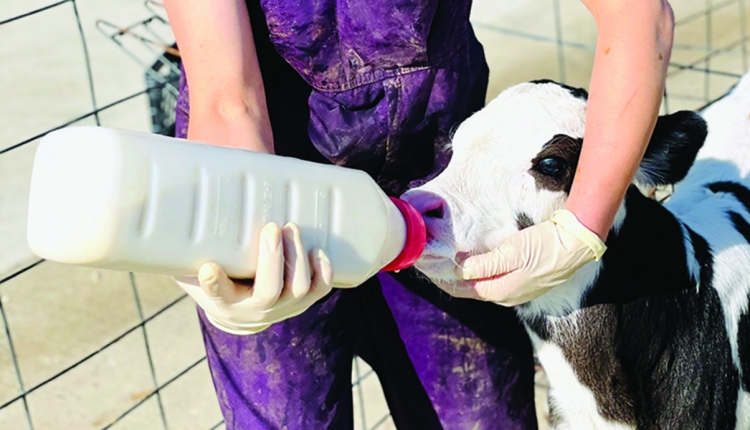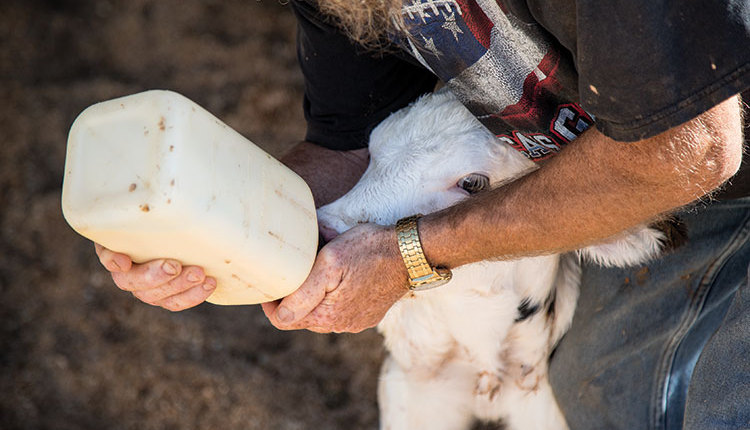
The question has been asked by dairy producers time and again: Is it better to feed colostrum with a nipple bottle or an esophageal tube feeder? The answer depends on the amount of colostrum fed.
It has generally been accepted that feeding by bottle or esophageal tube feeder will achieve sufficient results as long as an adequate volume of colostrum is fed soon after birth. However, some recent studies show that there is an interaction between feeding method and volume.
This article appears on page 545 of the September 10, 2016 issue of Hoard's Dairyman.
A special delivery
According to the USDA’s “Dairy Cattle Management Practices in the United States, 2014” report, at least some colostrum was fed by bottle on 87.4 percent of farms that hand-fed colostrum (versus allowing calves to suckle the dam). In general, the use of a bottle lessened and the use of an esophageal feeder became more common as herd size grew.When a bottle is used, suckling triggers the esophageal groove reflex. This places colostrum directly into the omasum and abomasum, where it will quickly empty into the small intestine to be absorbed. using an esophageal tube has advantages in convenience and speed, tube feeding results in colostrum deposited into the reticulo-rumen first. The colostrum then empties into the omasum and abomasum and moves on to the small intestine where colostrum is absorbed. Although the flow of colostrum occurs quickly, the ability of the calf to absorb immunoglobulins (IgG) declines rapidly. This situation could potentially result in poorer absorption of colostrum antibodies when fed with an esophageal tube feeder.The measure of success
Monitoring and measuring serum total protein (TP) in calves 1 to 7 days of age is the easiest way to determine how well a colostrum management program is working. Total protein can be determined on-farm using a refractometer. Commonly recommended goals are for 90 percent of calves sampled to have TP values greater than 5.2 grams per deciliter (g/dL) or for 80 percent of calves to have TP greater than 5.5 g/dL.A study done in 2009 by Sandra Godden and colleagues at the University of Minnesota examined the effect of feeding method (bottle or tube) on passive transfer of IgG. Either a large (3 liters, 200 grams IgG) or small (1.5 liters, 100 grams IgG) quantity of colostrum replacer was fed to newborn Holstein calves. By using colostrum replacer, researchers were able to standardize the mass of IgG fed. Not surprisingly, calves fed the larger mass of IgG had higher serum TP and IgG at 24 hours of age.There was an interaction between the method of feeding and volume of feeding (see table). Calves fed 1.5 liters by bottle had greater serum TP and IgG than calves fed 1.5 liters by esophageal tube. In addition, 100 percent of calves fed 1.5 liters of colostrum by bottle had successful passive transfer (serum IgG greater than 10.0 milligrams per milliliter), while only 42 percent of calves fed the small feeding by esophageal tube had successful passive transfer.Method of feeding became less important when more colostrum was consumed. When calves were fed the larger amount of colostrum (3.0 liters), there was no difference between feeding methods in serum TP or IgG, and 100 percent of calves had successful passive transfer.This study suggests that feeding a larger volume of high-quality colostrum regardless of delivery method is more important in achieving successful passive transfer. According to that new USDA report, only 21.7 percent of farms fed the recommended 4 quarts of colostrum or more at the first feeding.If you choose to feed a small volume of colostrum, for example when using a colostrum replacer, then the best practice is to feed it with a nipple bottle. However, if you choose to feed colostrum using a nipple bottle, many calves may not finish the full feeding and must still be tube fed the remaining colostrum.
Perfect the technique
Michigan State University Extension recommends training all personnel handling calves to use an esophageal tube feeder. Although tube feeding is often quicker than bottle feeding, poor tube feeding technique, such as allowing milk to drip into the lungs, will result in aspiration pneumonia.According to Don Sockett with the University of Wisconsin Veterinary Diagnostic Lab, calves that develop aspiration pneumonia will not exhibit clinical signs of pneumonia until two to five days after the event. He notes that affected calves will be unthrifty with chronic pneumonia that does not respond well to antimicrobial treatment. Calves will often have a gangrenous pneumonia that usually affects only one lung lobe.Esophageal tube feeders can be very useful for quickly delivering nutrients to calves, but they must be used properly. See the boxed item for best feeding practices.Colostrum is the first meal calves should receive, and quite possibly the most important meal of their lives. Be sure your method of delivery matches the amount of colostrum being fed, and ensure that colostrum is of the highest quality possible.Guidelines for esophageal tube feeders
Best practices to prevent aspiration pneumonia when using an esophageal tube feeder include:- Check that the tube is placed in the esophagus (not the trachea) before opening the hose valve to start the flow of liquid.
- Ensure the calf is standing or lying upright on its sternum while feeding.
- Hold the tube in place for the duration of the feeding.
- Allow the colostrum to flow via gravity.
- Always close the valve (or kink the hose) to stop the flow of liquid before removing the tube from the calf.
Return to the Hoard's Dairyman feature page.










